|
100 faces Linda Chen
(编者按:在一个族裔多元、宗教信仰多元的社会里,多伦多艺术家陈岳琳(Linda Chen)通过她的作品探索多元文化的交织和无边界的爱。这在一个民粹主义崛起、价值观分化的时代里,有其特殊的意义。贴心姐妹网将在总共四篇的系列里陆续介绍她的画作和思想。)
Visual Art as Cultural and Spiritual Innovation
Shifting Self-Portraits: Visual Art as Reflection on Cultural and Personal Transformations
Presentation by Linda Yueh-Lin Chen
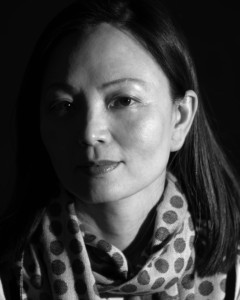
陈岳琳(Linda Chen)
Seventeen years ago, I immigrated from Taiwan to Canada – I was in my mid-thirties and had two daughters who were seven and eight. Since then, I have been learning to fit into life in Canada while also learning how to paint. In 2006, I registered as a diploma student at the Toronto School of Art (TSA), and being a TSA student has become a very important part of my immigrant life. I felt like I stepped into a temple of the arts, where I made friends who stimulated my mind as an artist and helped me form new perspectives about myself as a Canadian citizen. This gradually allowed me to blend into local life. I have even noticed that on some days, English has become my main language. You know, for a late immigrant, that is quite unusual!
My limited knowledge of English vocabulary and art contributed to my feeling nervous and intimidated in class. I can still clearly recall the first time I heard the word “critique.” Commenting about others’ work in public? I told myself, “I don’t think so!” From the influence of traditional Confucius education, I was used to being more reserved and private. I felt that I did not need to, nor did I want to, display my deeper thoughts and emotions in public. At the time, I also viewed art as simply something that provided aesthetic pleasure, not so much conceptual or emotional expressions. So when instructors assigned projects where we were asked to express feelings from our personal life experiences, it truly gave me a challenge.
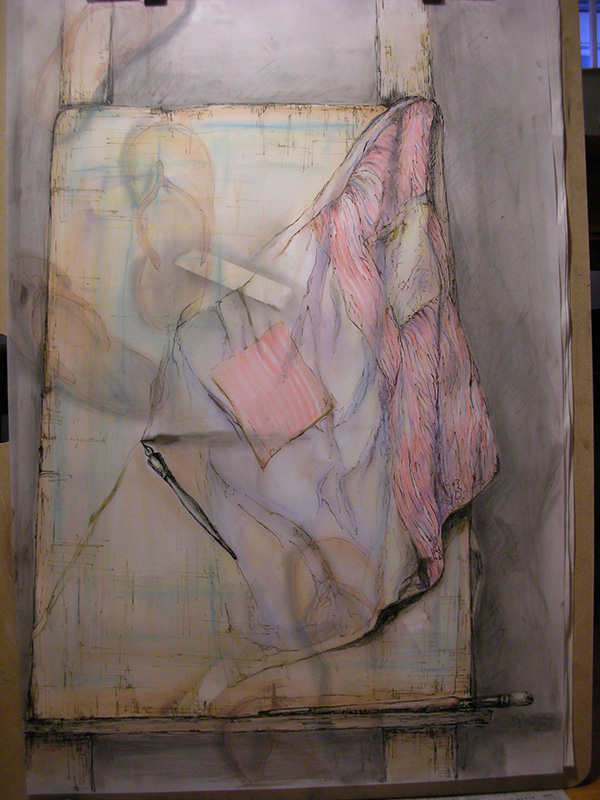
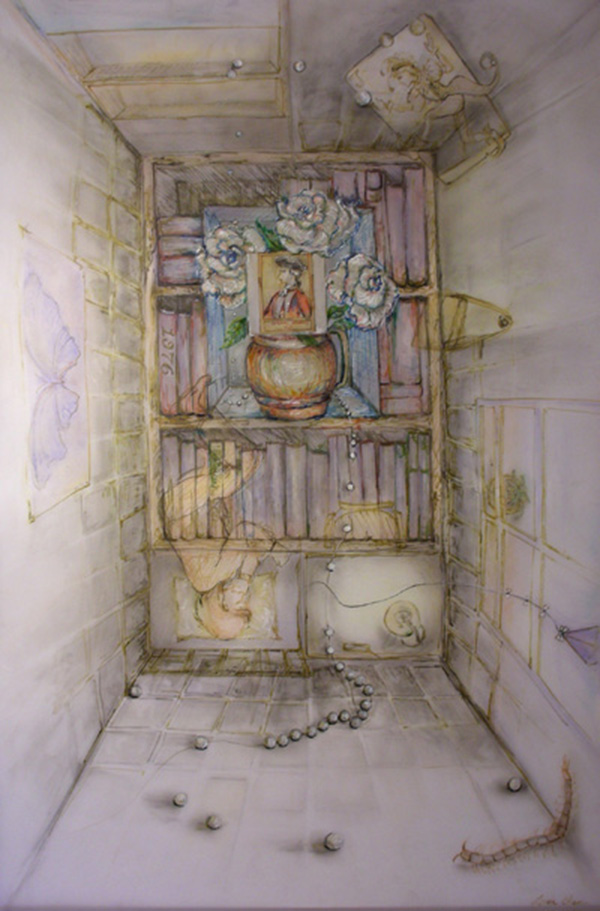
In 2009, I met Gretchen Sankey in her drawing class at TSA, and it completely changed the way I approached art. She inspired me to express my personal experiences in ways I never considered. Her class pushed me to be more innovative in my artistic practice, and the evolution of art began for me. Instead of always painting still life, I began to try conceptualizing and capturing my personal experiences in my artwork.
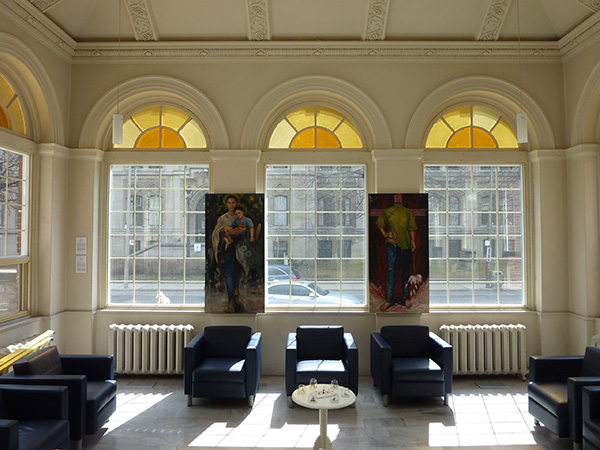
I participated in a recent art exhibition called “One-on-One: Creative Meditations” (part of the International Academy of Practical Theology conference) at Regis College this past April . For me, it was the most challenging show I have ever been a part of. One of the pieces I displayed is called “Disclosing”, and here is a description:
Piety towards parents and ancestors has been the golden rule for Chinese people for over a thousand years. It seems to be fading away in modern Chinese society, especially in the encounter with the West. Men or women, young or old, want to be the masters of their own bodies, with more authority, independence, openness, and freedom. Traditional disciplines of Confucius are not an invisible cross for them to carry any more. "Disclosing" is about this change in orientation and its consequences.
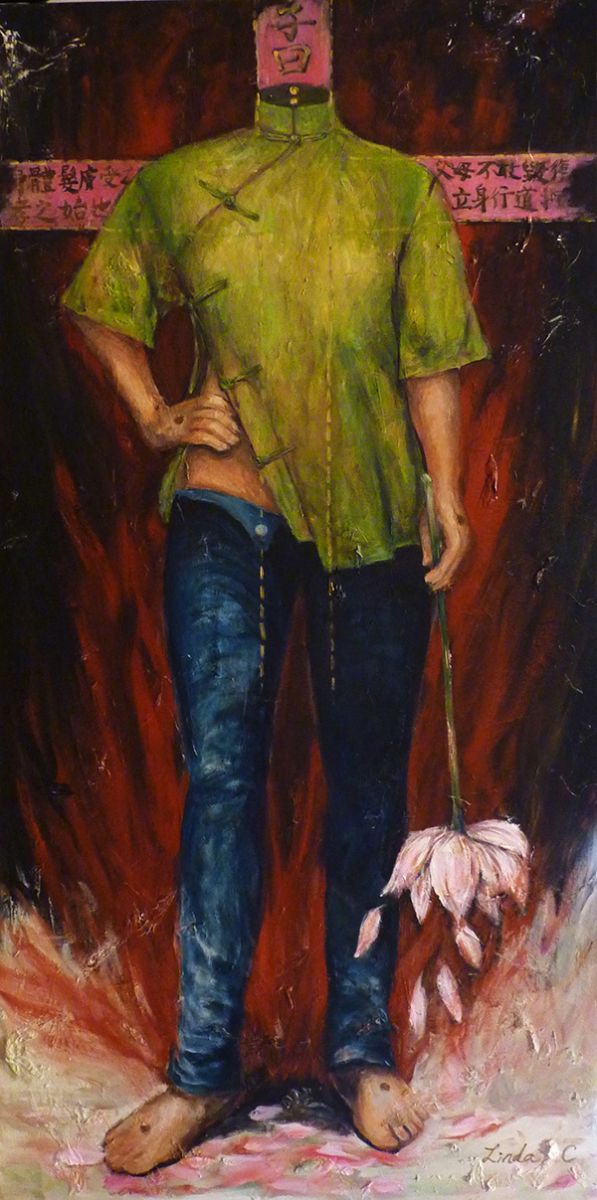
“Disclosing” is based on my experience as a first generation immigrant with two growing daughters – perhaps many of you can relate to this. I was brought up in a big Taiwanese family. With our hands holding incense sticks, we worshipped ancestors in our home and prayed for good health, peace and fortune to gods and goddesses in Tao and Buddhist temples. We studied and recited traditional Confucian rules in school. Since moving to the West, my values and beliefs have been shaken, challenged and questioned. Such events as reading my daughters’ report cards, answering the door for boys, setting curfews, and arguing about when the right time to get the first tattoo is, have forced me to constantly rethink my old values. The confrontation between Eastern and Western values, and the conflict between two generations, seemed to impact people I knew everywhere. “Disclosing” is about this conflict.
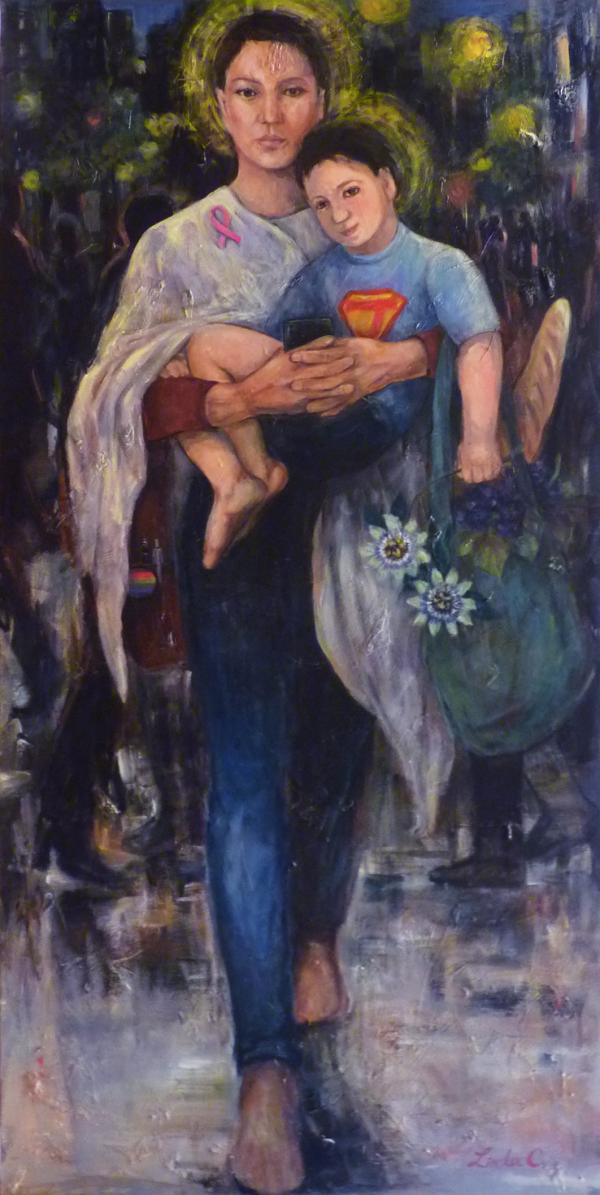
“Ma Li and Ye Su in Transit” is also based around the idea of intersecting cultures. Since I was a little girl, I never understood how people went to church to pray to gods who were blonde, and had blue eyes and high noses. Those kind of human beings only existed in movies and on posters! Two years ago, I walked into the oldest church in Macau, which was once a Portuguese colony. At the entrance, there were these little cards for visitors to take, which had images of an empress holding a baby prince, both wearing royal family robes from the Ming and Qing dynasties . I realized these were the Chinese versions of Mary and Baby Jesus! For the first time, I strongly sensed that, through art, I could feel close to Western religion, gods and saints. That inspired me to create this piece.
As a woman living in the 21st century, I wondered what Mary would be like as a mother in the modern day. How does she cope with a busy life? Does she use modern technologies as we do? Here is a description of “Ma Li and Ye Su in Transit”:
Living in a modern multicultural environment, I have always wondered how God and saints, from any religion, would look and act in such a diverse society. Are they walking with us? Are they walking within us? Do they carry a heavier burden than ordinary people? How do they bring us hope and enlighten us in this chaotic century? "Ma Li and Ye Su in Transit" tries to narrate my thoughts and feelings on this.
During the same time I was preparing for the One-on-One Show, I had been working on two other projects for a group exhibition at the Latcham Gallery. The theme of the show was “Home: Stories from here and away,” and it was about the complex relationship that exists between immigrants and the concept of “home.” My two projects were called “100 Faces” and “Conversation.”
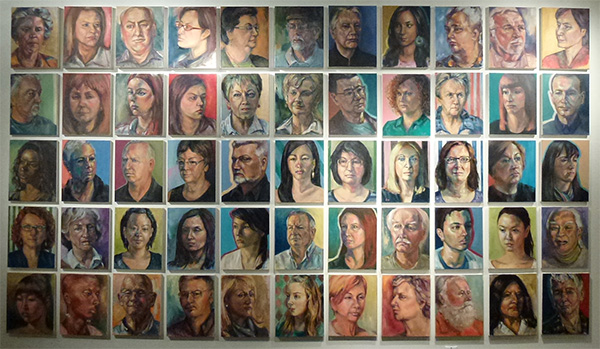
“100 Faces” is an ongoing group project by Painters 6, an artist group I’m a part of, and it is a study of the people in the community where we live. What you see in the image is my part of the project. Through this project, I have been able to meet many people from all types of cultural backgrounds and hear their stories. I feel that oftentimes, we know so little about other people, their cultures, and their religions, yet we tend to quickly judge others through our own points of view. This project has given me the opportunity to reflect on the way I see others, and to truly feel connected to Canada’s multicultural society. As an immigrant, I realized that I was not alone in this new country. In reality, there are so many people trying to adapt to this new environment. “100 Faces” is a project that encourages me to connect with the community around me.
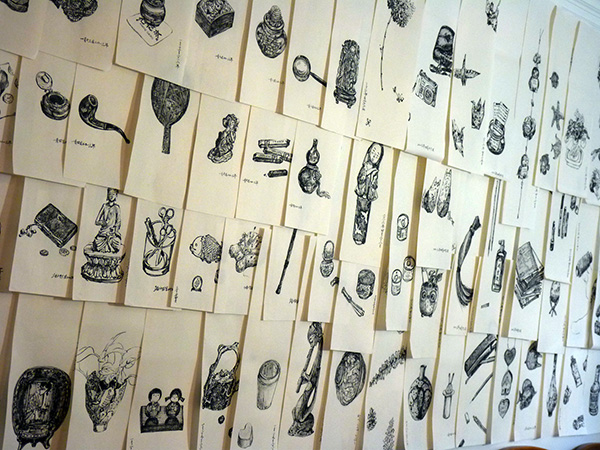
“Conversation,” on the other hand, involves me reaching into my inner self. “Conversation” is a personal project that began last year when I visited Taiwan to take care of my father. What appears to be simple ink drawings, in fact, started with nothing but a simple goal. My father suffered from a stroke two years ago. A few years before then, my mom passed away, leaving my brothers and me with hearts full of sorrow and a father who was a stranger. When I went to Taiwan and stayed with my father for a month, our relationship was put to a great test, because we had nothing to say to each other. We had a broken relationship from a lifetime of painful struggles. That month, our days were filled with silence in his small apartment. Although I fulfilled my role as a good, dutiful daughter, I returned to Toronto exhausted emotionally and physically.
Later that year, I returned to Taiwan to stay with my father for two months, and I decided that I had to do something that gave me peace. And so I decided to draw. I went to the local store and bought a brush and paper. Every day, at a certain hour, my father and I would sit face-to-face at a small table. I would take out my brush and paper, and pick something in the apartment my mom and dad used, like plates, ashtrays, and souvenirs from trips. Using the simplest method of depiction – black ink on white rice paper – I drew. I looked at the untarnished white paper and wished that my heart could become just as unclouded, and I looked at the black ink and wished that my will could be just as strong and clear. I had to break the ice.
In the short span of ten minutes, I would look at the object and draw. My father would look at the object and talk about it. Our eyes do not meet, but we have a conversation. It’s a good start.
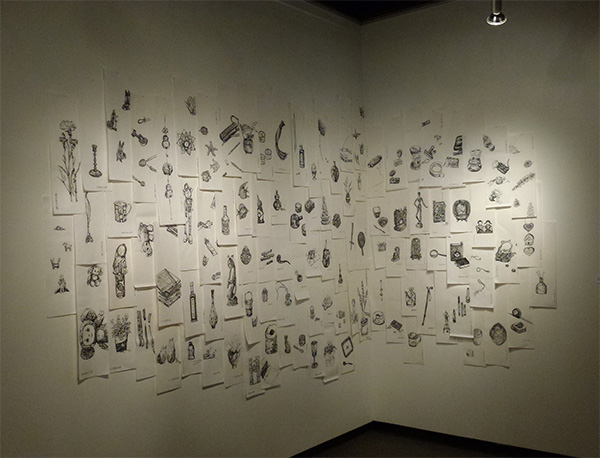
Whenever I finished a drawing, I taped it to a wall in my father’s apartment. Before I left Taiwan, I looked at this wall of drawings and saw a mirror, flashing with black and white memories. When I returned to Toronto, I recreated this mirror on a wall in my home, and expanded it as I continued to draw. My father was not with me, but the conversation continued. Through this form of meditation, I have found inner peace and tranquility.
I have realized that a piece of art is not just a piece of art. But each piece is an invitation that brings the viewer into my world of East-meets-West, into my perspective as an immigrant, and into my personal thoughts and emotions. For me, art has been a tool of spiritual innovation because it has not only taught me how to explore and express my personal experiences in ways that connect me with other people, but has also guided me through times of personal healing.
In conclusion, I would like to share with you a drawing of mine which I did in Ms. Sankey’s class. I have an ivory silk blouse that has been with me for 30 years, from Hong Kong, to Taiwan, and now to Toronto. It has become a shield to me in some ways—a body armour. After seventeen years of life in Canada as a first generation immigrant, I have realized that changes in my job, cultural environment, and language cannot demolish the roots of my identity. The further I have traveled, and the more I have experienced, the deeper this body armour has penetrated me, and I know that it will always hold me still.
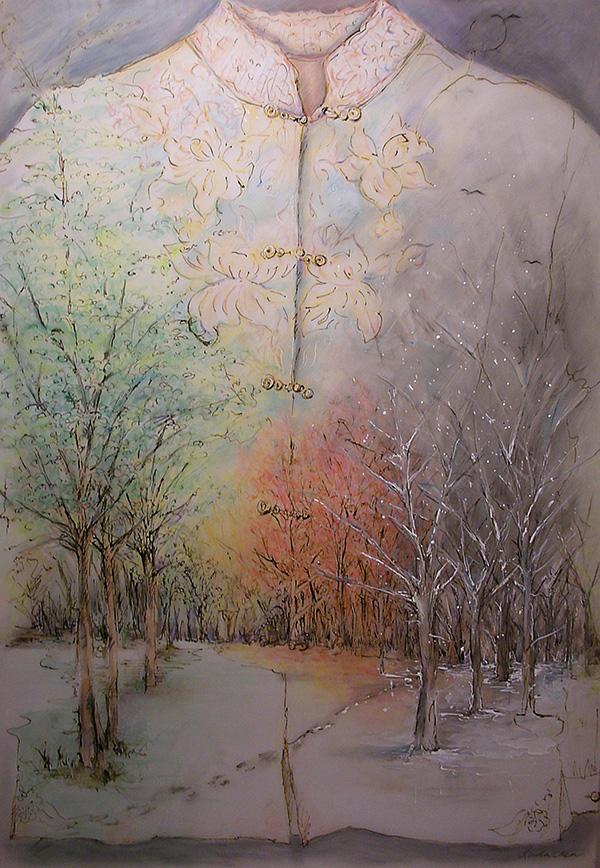
Memory of Time, 2010 Linda Chen
相关链接:
陈岳琳(Linda Chen) 的画(一):用画笔探索多元文化的交织和无边界的爱
陈岳琳(Linda Chen) 的画(二):用画笔探索多元文化的交织和无边界的爱
|


